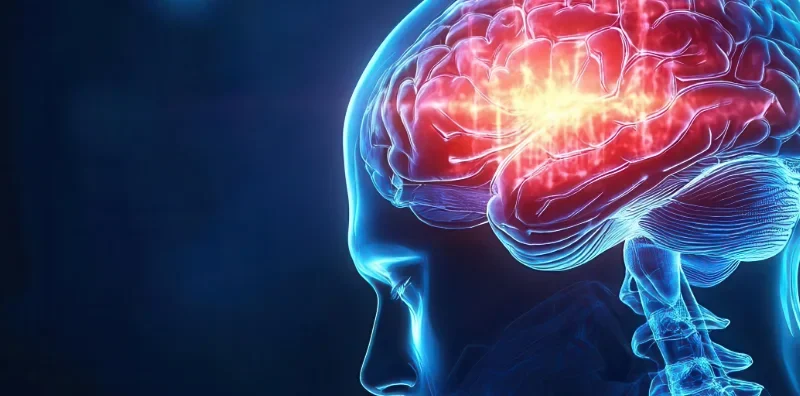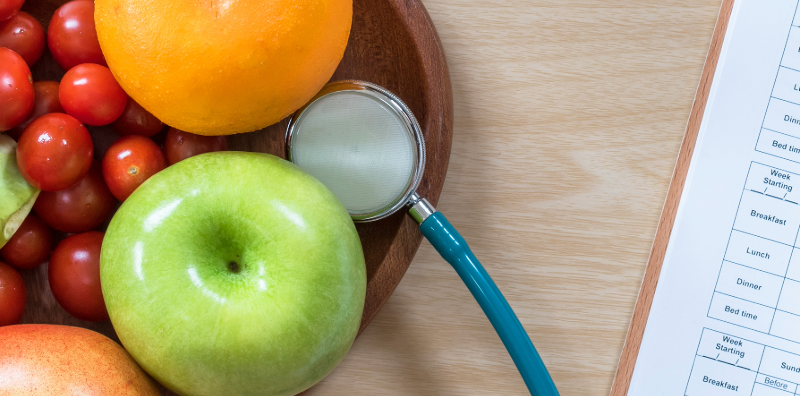A major women’s magazine recently asked me some questions on HbA1c. Here are my answers:
Why is HbA1C an important metric for blood sugar control? What health conditions does HbA1C help to predict your risk for?
HbA1c is a modified form of hemoglobin in the blood that results from the cross-linking of glucose in the blood to hemoglobin in the red cells that carry oxygen to the cells in your body. HbA1c is a direct marker of elevated blood glucose levels over the past 120 days, which is the average lifetime of a red blood cell in circulation. The higher the levels of your blood sugar in that period, the greater the levels of HbA1c in the blood.

Measuring HbA1c is the primary blood marker used for determining the presence of both pre-diabetes and type 2 diabetes. According to the CDC, nearly 100 million Americans have pre-diabetes and more than 38 million have type 2 diabetes. More importantly, it is also an indirect marker of insulin resistance in your body. Thus, any chronic disease associated with insulin resistance is also associated with an elevated HbA1c level.
Such chronic diseases strongly associated with insulin resistance include type 2 diabetes, heart disease, liver disease, kidney disease, and neurological diseases such as Alzheimer’s, Parkinson’s, and depression. Thus, an elevated HbA1c in your blood is a marker that you have a relatively bleak future.
What are the advantages of testing HbA1C vs. fasting blood glucose?
Fasting blood sugar is measured after a 12-hour fast so that you are not measuring any potential blood sugar spikes caused by something you have eaten. On the other hand, HbA1c is the average blood sugar level of the previous 120 days. This is why HbA1c is a far better predictor of the development of future chronic disease than a fasting blood sugar test.
How would a doctor typically determine whether someone should try to lower HbA1C naturally, or whether they require medication for blood glucose control?
If your HbA1c is greater than 5.6, then you are considered to be pre-diabetic. This also means you have significant insulin resistance.
Pre-diabetes is characterized by increased production of insulin by the pancreas to try to reduce increased blood sugar. This is called hyperinsulinemia and is the first step in the disruption in your metabolism. Usually, your physician will recommend diet and lifestyle changes. Of course, these are rarely followed.
Unfortunately, the conversion rate from pre-diabetes to type 2 diabetes is about 5-15 percent per year. Once you develop type 2 diabetes, this means the ability of your pancreas to secrete sufficient insulin to reduce blood sugar levels has become highly compromised, and HbA1c begins to rise at a faster rate. If your HbA1c level is greater than 6.5, you are considered to have type 2 diabetes, and your physician will recommend taking diabetic medication to lower your blood glucose levels.
However, once you develop type 2 diabetes, you are four times more likely to develop heart disease and twice as likely to develop Alzheimer’s. Neither of these chronic diseases has much to do with elevated blood sugar levels, but they are driven by increasing disruption to your metabolism.

How much can you realistically lower HbA1C in six months through lifestyle changes?
If you are following a strict Zone diet, the clinical data demonstrate you can expect your HbA1c to drop by 1 to 2 percentage points within six months. However, insulin levels and thus insulin resistance can be dramatically reduced within four days using the Zone diet. The difference in time is because insulin levels can rapidly decrease, but you have to wait for at least 120 days for the HbA1c levels to reflect this rapid drop in insulin levels.
How much can you potentially lower medication with medication over six months?
Medication will drop HbA1c by only 1 to 1.5 points, but its effectiveness of the drugs begins to wear off. As a result, additional diabetic medications are added to the existing drug dosage to maintain your HbA1c levels.

How can the Zone diet help to lower HbA1C so rapidly?
The Zone diet was patented to reduce insulin resistance. It does so because it activates AMPK, the master regulator of metabolism. One of the immediate consequences of increasing AMPK levels is the increased uptake of blood glucose by every cell in the body. The reason that HbA1c drops more slowly is because you have to remove the old red blood cells in the blood that are already cross-linked with glucose. The average lifetime of a red cells is about 120 days.
How can fiber affect HbA1C? Can you offer any tips for increasing fiber intake?
Fermentable fiber in your diet can be converted to short-chain fatty acids by the microbes in your gut (and primarily in the colon). These short-chain fatty acids can activate AMPK in your cells to increase the removal of glucose from the blood. However, not all fiber is fermentable to short-chain fatty acids. The best sources of fermentable fiber would include the ABCs (artichokes, asparagus, broccoli, Brussel sprouts, and cauliflower).
What role do carbohydrates play in managing HbA1C? What carbohydrate sources are best for someone who’s trying to lower their HbA1C?
Virtually all dietary carbohydrates enter the blood primarily as glucose. As blood glucose levels rise, the pancreas secretes the hormone insulin to temporarily cause the metabolism in other organs to start working to remove this excess blood glucose and transport it into the cell where it can be converted to energy. This is where the concept of the glycemic load appears.
The lower the glycemic load of your total carbohydrate intake at a meal, the less insulin is required to reduce blood glucose levels. Non-starchy vegetables have the lowest glycemic load, whereas white carbohydrates such as white bread, white rice, and white potatoes have the highest. Non-starchy vegetables are also rich in fermentable fiber that is broken down by the microbes in the gut to make short-chain fatty acids that further enhance the removal of elevated blood glucose levels.
Certain supplements (e.g. chromium, magnesium, etc.) and foods (e.g. cinnamon, probiotics, apple cider vinegar) may help with blood sugar control. Are any of these believed to be effective for helping to lower HbA1C?
All of these will have limited effects compared to lowering HbA1c compared to the diet.

How does exercise help with HbA1C? Is there a type of exercise that’s particularly effective for lowering HbA1C?
The molecular key to both diet and/or exercise to reduce HbA1c levels is their ability to activate the master switch of metabolism in every one of your 30 trillion cells. That master switch is AMPK.
It is AMPK that activates the cell’s metabolism to increase the removal of blood glucose and bring into the cell for use as an energy source. The power of the Zone diet is that it is a powerful activator of AMPK. Diet is probably two to three times more important than exercise in activating AMPK.
However, the higher the intensity of the exercise, the more effective it becomes in the reduction of blood sugar levels because of the greater activation of AMPK. However, the diet will always be a more effective intervention for lowering HbA1c.
What role does sleep play in blood glucose control? Any tips for improving sleep habits to help lower HbA1C?
Quality sleep also has a role to play in lowering HbA1c, although lower than diet and exercise. Poor quality sleep causes an increase in cortisol levels that induces an increase in insulin resistance. What we term “insulin resistance” is best understood as a decrease in AMPK activity within a cell. The best way to improve sleep quality is to reduce exposure to blue light about two hours before going to bed. It is the blue light that disturbs your circadian rhythms, which are essential for getting high-quality sleep. Sources of blue light would include television screens, computer screens, cell phones, etc.

What role does chronic stress play in blood glucose control? Any stress relief tips to help lower HbA1C?
Chronic stress generates higher levels of cortisol production. Cortisol is a powerful driver of insulin resistance that results in higher HbA1c levels. The best way to reduce chronic stress is to develop a less stressful lifestyle. Mediation is one method that is useful.
Any other lifestyle changes that can help to lower HbA1C naturally?
Your most powerful lifestyle change to lower HbA1c will always be the diet.
The underlying cause of elevated HbA1c is insulin resistance, which is caused by an inhibition of AMPK. Thus, your goal is to activate AMPK activity in each of your 30 trillion cells. Diet will have the greatest impact. Specifically, a calorie-restricted diet containing adequate protein balanced by low-glycemic carbohydrates with a dash of fat at every meal. This describes the Zone diet, which was patented to reduce insulin resistance.
The Zone diet also has the greatest clinical support in reducing insulin resistance in those with pre-diabetes and type 2 diabetes. Another useful dietary intervention to reduce insulin resistance is reducing chronic low-level inflammation by increasing your intake of omega-3 fatty acids. These two lifestyle interventions will account for the greatest impact on reducing elevated HbA1c levels.
Dietary polyphenols can help reduce oxidative stress, but they will have far lower impact on reducing HbA1c than either a balanced calorie-restricted diet or omega-3 fatty acid supplementation.
Of the non-dietary interventions, exercise will have a greater effect on reducing insulin resistance, followed by improved quality of sleep and general stress reduction.







4 comments
I can’t thank you enough for this transcription. I am always eager to learn more about Metabolic Engineering. I have been following Dr. Sears since reading The Zone.
HbA1c is an indirect blood marker for AMPK, the master regulator of metabolism. As HbA1c increases, this means that AMPK is being inhibited, and metabolic efficiency is decreasing as a result. The most powerful way to increase AMPK activity and reduce insulin resistance remains the Zone diet.
Hola. Quiero la dieta de la zona. Como la consigo?
Wonderful! I wouldn’t be exaggerating if I said you deserve the Noble Prize.